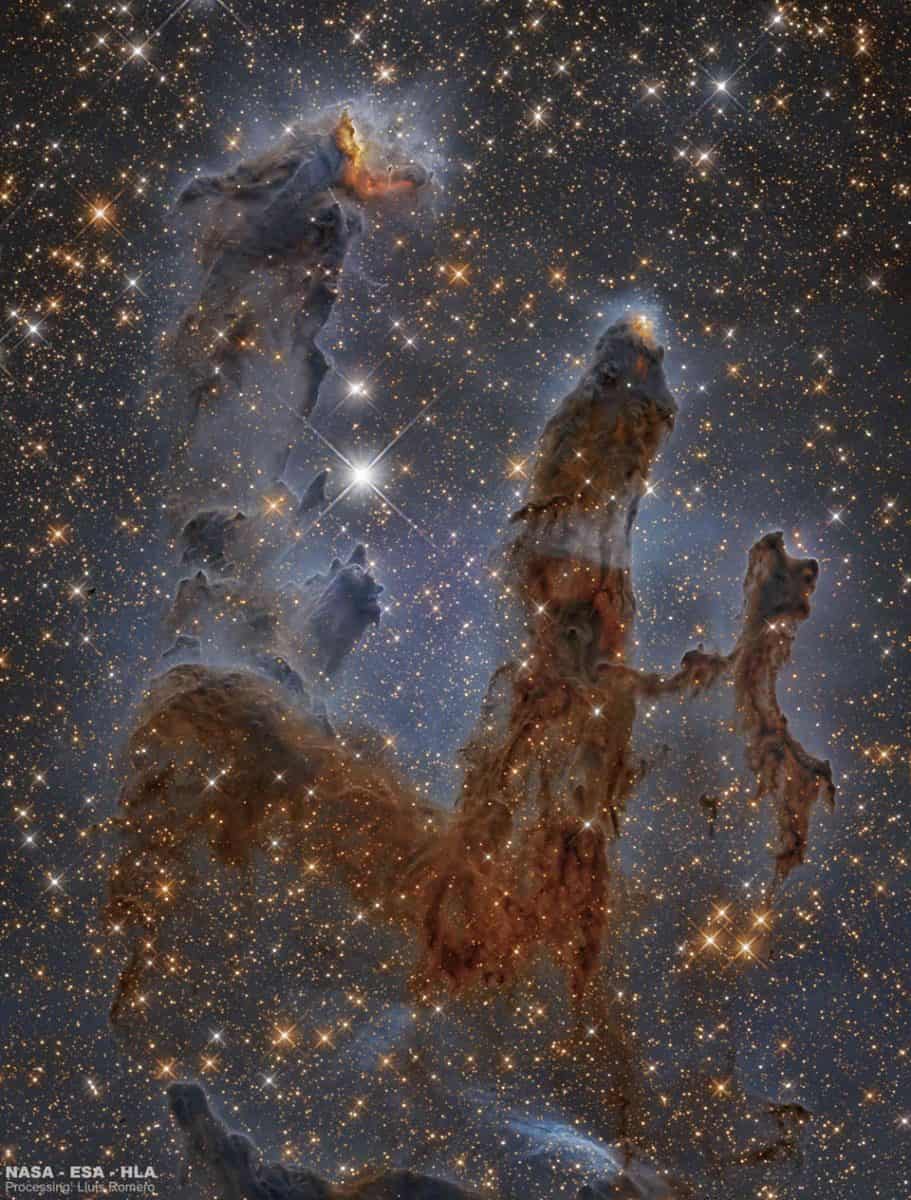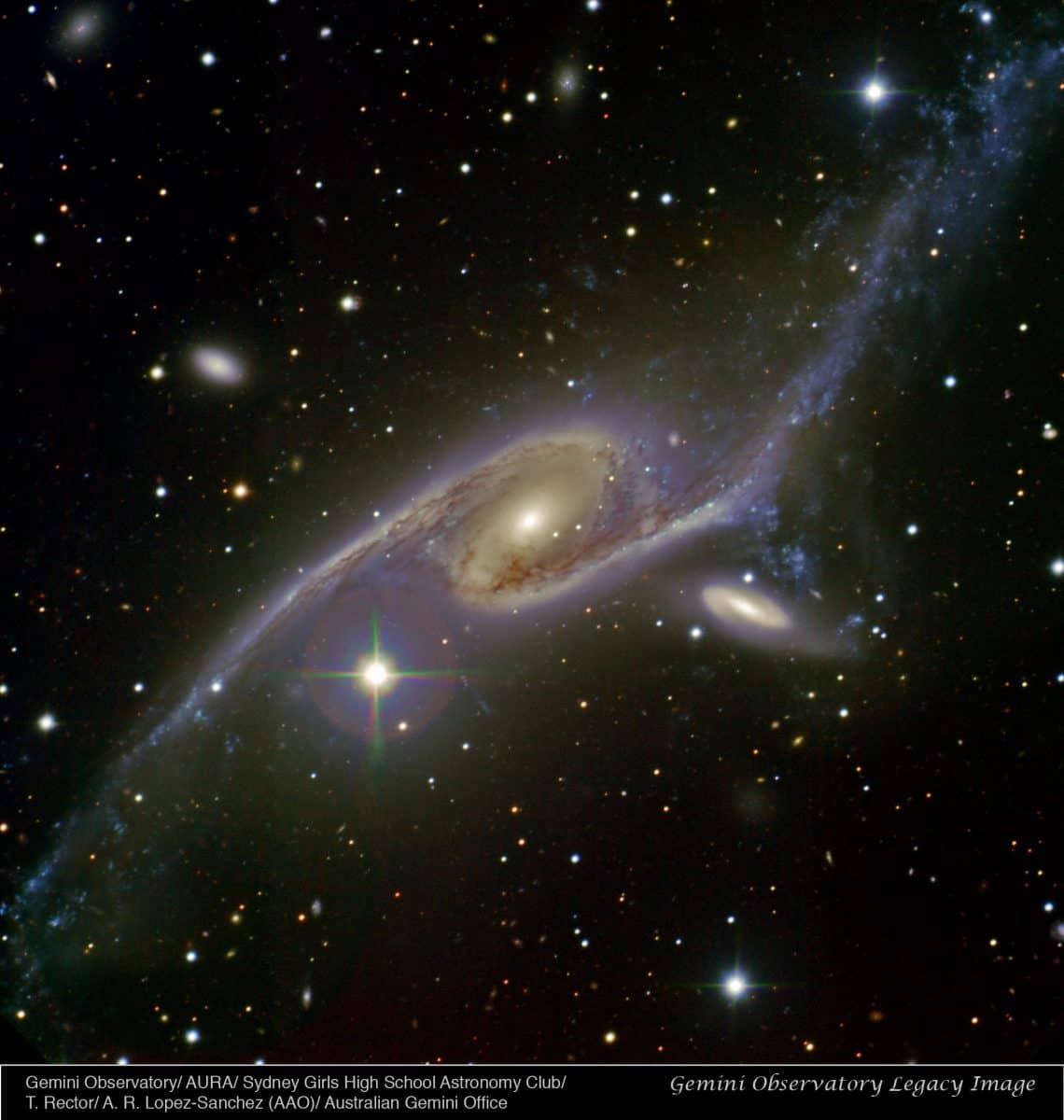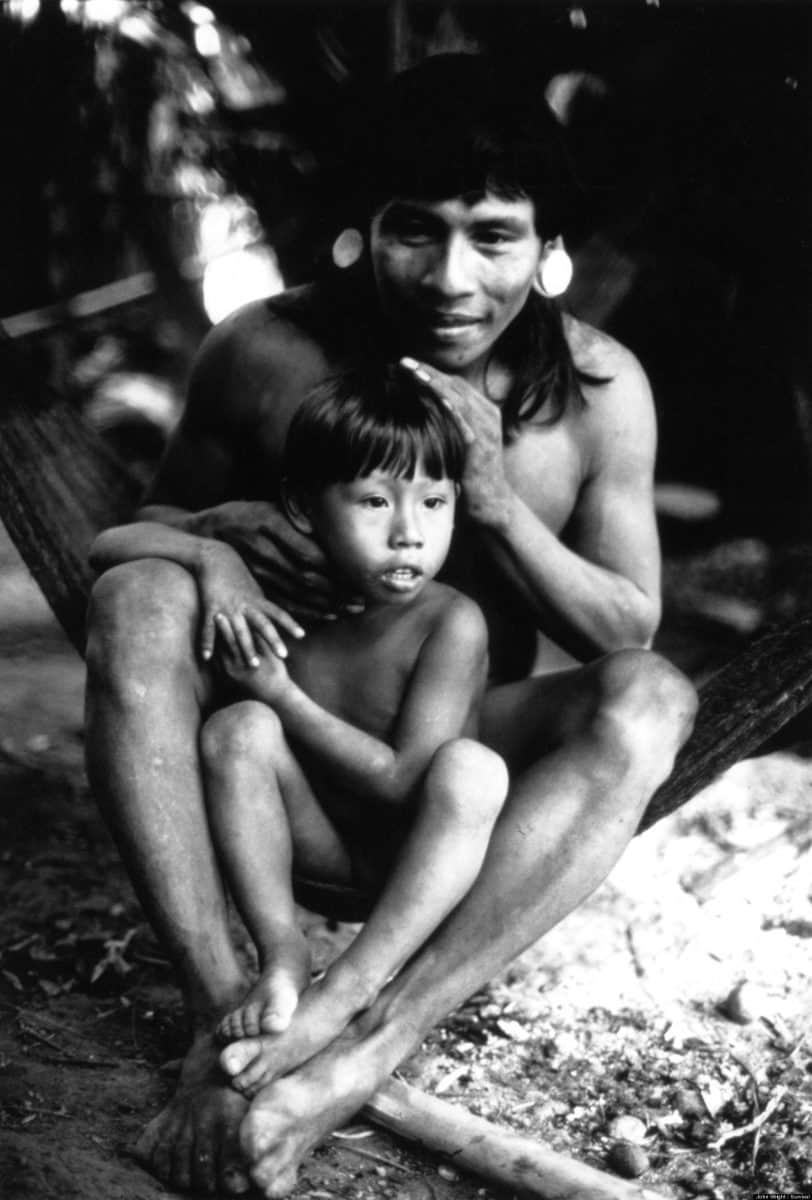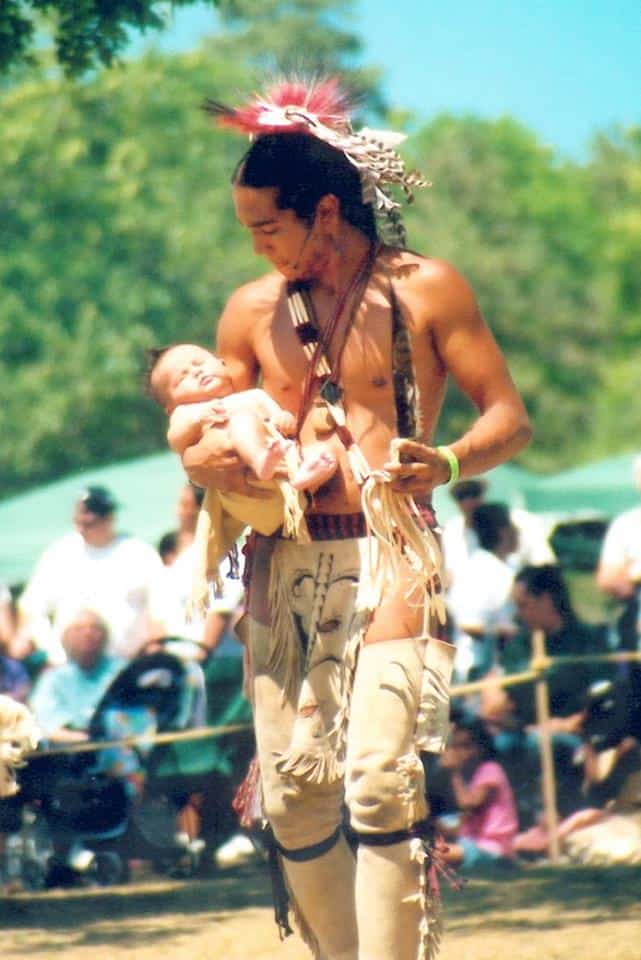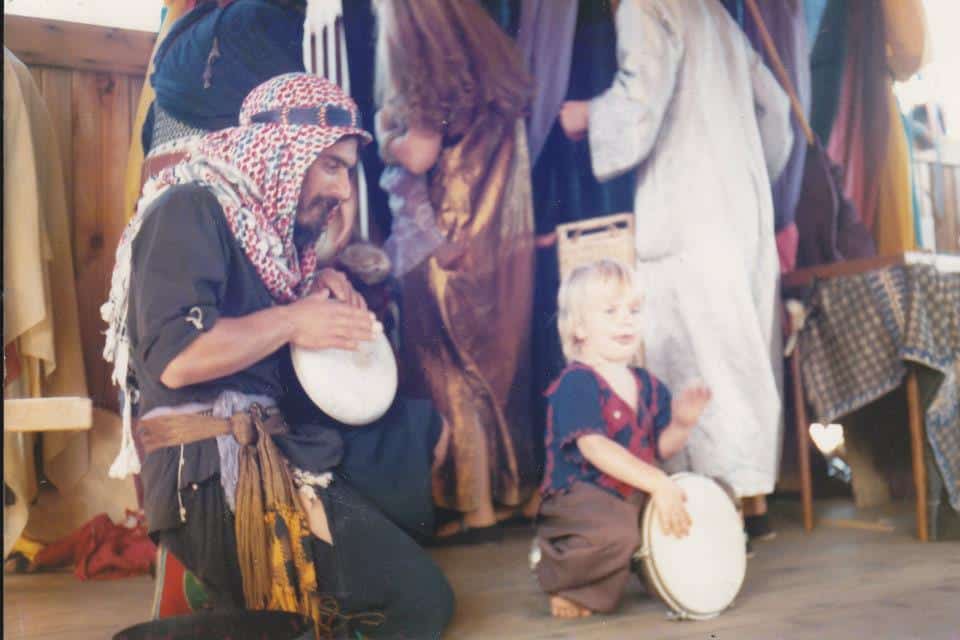Blog
Alekos K. Vretos was born in Athens in 1976. In 1978 his family moved to Argos were he grew up. His father was in love with music so he took him for piano lessons at the age of three. That was Alekos’ first contact with music. His first piano teacher was Mrs. Eleni Apostolaki. At the age of sixteen he decided that his route in life would be music. Yiannis Iordanoglou was the first to open his eyes on what music and being a musician is really about.
more...https://www.youtube.com/watch?v=dq2iQNdwlTI
more...Newborn stars are forming in the Eagle Nebula. Gravitationally contracting in pillars of dense gas and dust, the intense radiation of these newly-formed bright stars is causing surrounding material to boil away. This image, taken with the Hubble Space Telescope in near infrared light, allows the viewer to see through much of the thick dust that makes the pillars opaque in visible light. The giant structures are light years in length and dubbed informally the Pillars of Creation. Associated with the open star cluster M16, the Eagle Nebula lies about 6,500 light years away. The Eagle Nebula is an easy target for small telescopes in a nebula-rich part of the sky toward the split constellation Serpens Cauda (the tail of the snake).
more...Eric Allan Dolphy, Jr. (June 20, 1928 – June 29, 1964) was an American jazz alto saxophonist, bass clarinetist and flautist. On a few occasions, he also played the clarinet and piccolo. Dolphy was one of several multi-instrumentalists to gain prominence around the same time. His use of the bass clarinet in jazz performance probably finally established the instrument in the music, and he extended the vocabulary and boundaries of the alto saxophone, and was among the earliest significant jazz flute soloists.
His improvisational style was characterized by the use of wide intervals, in addition to using an array of extended techniques to emulate the sounds of human voices and animals. Although Dolphy’s work is sometimes classified as free jazz, his compositions and solos were often rooted in conventional (if highly abstracted) tonal bebop harmony and melodic lines that suggest the influences of modern classical composers such as Béla Bartók and Igor Stravinsky.
Dolphy was born in Los Angeles to Eric Allan Dolphy, Sr. and Sadie Dolphy, who immigrated to the United States from Panama.
more...Lazy Lester (born Leslie Carswell Johnson, June 20, 1933 Torras, Louisiana) is an American blues musician who sings and plays the harmonica and guitar. His career has spanned the 1950s to the present day.
Best known for regional hits recorded with Ernie Young’s Nashville-based Excello Records, Lester also contributed to songs recorded by other Excello artists, including Slim Harpo, Lightnin’ Slim, and Katie Webster. Cover versions of his songs have been recorded by (among others) the Kinks, the Flamin’ Groovies, Freddy Fender, Dwight Yoakam, Dave Edmunds, Raful Neal, Anson Funderburgh, and the Fabulous Thunderbirds. In the comeback stage of his career (since the late 1980s) he has recorded new albums backed by Mike Buck, Sue Foley, Gene Taylor, Kenny Neal, Lucky Peterson, and Jimmie Vaughan.
more...Obo Addy was born January 15, 1936. He was a prominent member of the first generation of African musicians to bring their traditional and popular music to Europe and the United States of America. This versatile magician of the drums embodied the past, present and future of Ghana’s musical culture. He celebrated past traditions while embracing new ideas and foreign influences. Internationally, Obo Addy’s contribution can be measured by the fact that he was one of the key originators of the seminal musical movement now known as “Worldbeat.”
more...This new ESO Very Large Telescope image shows the planetary nebula Fleming 1 in the constellation of Centaurus (The Centaur). This striking object is a glowing cloud of gas around a dying star. New observations have shown that it is likely that a very rare pair of white dwarf stars lies at the heart of this object. Their orbital motions can fully explain the remarkably symmetric structures of the jets in the surrounding gas clouds in this and similar objects.
Fleming 1 is an unusual planetary nebula situated in the Centaurus constellation. It has a pair of symmetrical jets spanning more than 2.8 pc and delineated with a number of knots. The jets and knots are moving away from the center of the nebula and were probably ejected 10,000 to 16,000 year ago. The innermost part of the nebula has a butterfly shape and is immersed into a faint halo. The butterfly’s wings point in the direction of jets with their axis titled by 50° to the line of sight. The waist of the “butterfly” is surrounded by a torus of expanding hot gas forming the inner bright ellipse. Fleming 1 is probably 5,000 years old.
Distance 2,400 pc ly
more...Ernest Ranglin OD (born 19 June 1932) is a Jamaican guitarist and composer who established his career while working as a session guitarist and music director for various Jamaican record labels including Studio One and Island Records. Ranglin played guitar on many early ska recordings and helped create the rhythmic guitar style that defined the form. Ranglin has worked with Theophilus Beckford, Jimmy Cliff, Monty Alexander, Prince Buster, the Skatalites, Bob Marley and the Eric Deans Orchestra. He is noted for a chordal and rhythmic approach that blends jazz, mento and reggaewith percussive guitar solos incorporating rhythm ‘n’ blues and jazz inflections.
Ernest Ranglin was born in Manchester, West Central Jamaica. His family moved to Kingston, where he attended the Providence Primary School, Kingston Senior School and Bodin College. Ranglin’s introduction to music was through two uncles who both played guitar. Initially a self-taught guitarist; he received some tutoring on how to sight-read from a violin player named Tommy Tomlins. At the age of 15, Ranglin joined the Val Bennett Orchestra, which was followed by a period of employment with the Eric Deans Orchestra. While performing locally with these orchestras Ranglin was introduced to the jazz pianist Monty Alexander, which led to a lifelong friendship as well as numerous musical collaborations.
more...Willis Robert “Billy” Drummond, Jr. (born June 19, 1959 in Newport News, Virginia) is an American jazz drummer.
Drummond learned jazz from an early age from his father, who was a drummer and a jazz enthusiast and whose record collection included many recordings of Miles Davis, Art Blakey, Max Roach, Buddy Rich and Elvin Jones. He played in bands from age eight and studied at Shenandoah College and Conservatory of Music.
He moved to New York at the behest of Al Foster in 1986 and shortly thereafter joined the Blue Note band, Out of the Blue, with whom he recorded their last album. He joined the Horace Silver sextet, with whom he toured extensively, before joining Sonny Rollins, with whom he toured for three years. He is a long-time member of Carla Bley‘s Lost Chords Quartet, Sheila Jordan‘s Quartet, and the Steve Kuhn Trio. He also leads a New York-based band called Freedom of Ideas. In addition to touring he is Professor of Jazz Drums at the Juilliard School and New York University.
A sideman on over 300 records, Drummond has played and recorded with Nat Adderley, Ralph Moore (1989 and subsequently), Buster Williams(1990–93), Charles Tolliver (1991), Lew Tabackin and Toshiko Akiyoshi, Hank Jones (1991), James Moody (early 1990s), Sonny Rollins, Andy LaVerne (1994), Lee Konitz (1995), Dave Stryker (1996), George Colligan (1997), Ted Rosenthal, Bruce Barth, Andrew Hill (from 1997–2000), Larry Willis (2006 to the present), Toots Thielmans, Freddie Hubbard (mid-1990s), Chris Potter, Eddie Gómez, Stanley Cowell, Javon Jackso.
more...Lela Tataraidze grew up in a family of musicians from Tusheti, the mountainous region of Georgia. With her sad eyes but a happy face, she is an excellent accordion and panduri player, and also a brilliant vocalist, who sings the popular songs of the mountains with a lot of emotion.
more...https://www.youtube.com/watch?v=qVoXUGolOlo&t=544s
more...Image of NGC 6872 (left) and companion galaxy IC 4970 (right) locked in a tango as the two galaxies gravitationally interact. The galaxies lie about 200 million light-years away in the direction of the constellation Pavo.
NGC 6872, also known as the Condor Galaxy, is a large barred spiral galaxy of type SB(s)b pec in the constellation Pavo. It is 212 million light-years (65 Mpc) from Earth and is approximately five billion years old. NGC 6872 is interacting with the lenticular galaxy IC 4970, which is less than one twelfth as large. The galaxy has two elongated arms; from tip to tip, NGC 6872 measures 522,000 light-years (160,000 pc), making it one of the largest-known spiral galaxies. It was discovered on 27 June 1835 by English astronomer John Herschel.
more...Sir James Paul McCartney CH MBE (born 18 June 1942) is an English singer-songwriter, multi-instrumentalist, and composer. He gained worldwide fame as the bass guitarist and singer for the rock band the Beatles, widely considered the most popular and influential group in the history of pop music. His songwriting partnership with John Lennon was the most successful of the post-war era. After the group disbanded in 1970, he pursued a solo career and formed the band Wings with his first wife, Linda, and Denny Laine.
McCartney is one of the most successful composers and performers of all time. More than 2,200 artists have covered his Beatles song “Yesterday“, making it one of the most covered songs in popular music history. Wings’ 1977 release “Mull of Kintyre” is one of the all-time best-selling singles in the UK. A two-time inductee into the Rock and Roll Hall of Fame (as a member of the Beatles in 1988, and as a solo artist in 1999), and an 18-time Grammy Award winner, McCartney has written, or co-written, 32 songs that have reached number one on the Billboard Hot 100, and as of 2009 he has 25.5 million RIAA-certified units in the United States. McCartney, Lennon, George Harrison and Ringo Starr all received appointment as Members of the Order of the British Empire in 1965 and, in 1997, McCartney was knighted for services to music. McCartney is also one of the wealthiest musicians in the world, with an estimated net worth of US$1.2 billion.
more...William Hooker is an American jazz drummer and composer.
Hooker has performed as a leader of many ensembles of improvised and new music. “Recognized as an iconoclast, and one of the most innovative musicians and drummers of his generation, William knows no genre bounds and ceaselessly searches for new forms of music, always with the intent to inspire.”
Accompanying musicians have included: Billy Bang, Thurston Moore, David Murray, David S. Ware, William Parker, Melvin Gibbs, Donald Miller, DJ Olive, Elliott Sharp, Malachi Thompson, Zeena Parkins, Lee Ranaldo, DJ Spooky, Rob Brown, Roy Campbell, Mark Hennen, Steven Bernstein, Roy Nathanson, Jason Hwang, Dave Soldier, Sabir Mateen, Glenn Spearman, Joseph Celli, Ellen Christi, Liudas Mockūnas, and many others.
more...Elmer H. “Rudy” Rutherford (June 18, 1924, Huachuca City, Arizona – March 31, 1995, New York City) was an American jazz saxophonist and clarinetist.
Rutherford played early in the 1940s with Lionel Hampton and Count Basie; he initially took Jack Washington‘s place in Basie’s orchestra as a baritone saxophonist, and once Washington returned from military service, Rutherford switched to alto saxophone. In 1947 Rutherford moved to Teddy Buckner‘s band, though he continued working with Basie into the early 1950s. He worked with Wilbur De Paris late in the 1950s and appeared with Chuck Berry at the Newport Jazz Festival in 1958. In the 1960s he worked with Buddy Tate and spent several years with Earl Hines in the mid-1970s. He worked with Illinois Jacquet in the 1980s and was active in performance until his death.
more...https://www.youtube.com/watch?v=gbuviE93Ew4
more...RCW 108 is a molecular cloud that is in the process of being destroyed by intense ultraviolet radiation from heavy and hot stars in the nearby stellar cluster NGC 6193, seen to the left in the photo. A series of images were obtained with the Wide Field Imager (WFI) of areas in the Milky Way band, including some in which interstellar nebulae of gas and dust are seen. Each frame records 8184 x 8196, or over 67 million, pixels in a sky field of 32 x 32 arcmin 2. The photo shows the RCW 108 complex of bright and dark nebulae in the southern association Ara OB1, a star-forming region in the constellation Ara (the Altar), deep in the southern sky. The resolution in this image has been degraded by reducing the number of pixels in one direction from about 8000 to 3000 in the “High-Resolution version”, in order to make the image transportable over the web without incurring completely unacceptable transfer times. Still, it is very large, even in the highly compressed jpeg format, reflecting the great amount of details visible.
This colour picture is a composite made from 12 separate images, obtained with the WFI on 27 March 1999. The blue component corresponds to the B filter, the green to the V filter, and the red to the H-alpha filter. The images in each filter are the composite of 4 individual frames obtained with the telescope pointing at slightly different positions on the sky, so that the parts of the sky falling in the gaps between the 8 individual 2k x 4k CCDs in any given frame are recorded on the others. The monochromatic images are then produced by superimposing the individual frames, correcting for the telescope offsets ; this ensures that the complete field is well covered. This procedure is not simple, as the observing conditions may change slightly from exposure to exposure, resulting in small differences. Finally, the combined images in each filter are aligned and colour-coded to produce the colour picture.
For the processing of this large photo (8k x 8k; 256 Mbytes), a minimum of contrast correction was made and very faint lines may still be perceived in some places where the individual frames were joined. It may also be noted that there is a slight misalignment of the individual colours in stellar images at the extreme corners of the large field. This is due to the effect of differential atmospheric refraction, i.e. light rays of different colours are bent differently in air.
The exposure time was 300 sec for each frame in H-alpha, and 60 sec in B and V. East is to the left and North to the top.
more...More Posts
- The Cosmos with NGC 2336
- Burning Spear
- Ralph Towner
- Benny Powell
- Harry Bellafonte
- Charlie Rice
- World Music with the Warsaw Village Band
- Daily Roots with the Vibes Tone
- Surviving the Pandemic and Realizing Racial Justice
- The Cosmos with IC 5063
- Brian Jones
- John Fahey
- Willie Bobo
- Svend Asmussen
- World Music with Cumbia
- Daily Roots with the Itals
- Surviving the Pandemic and Realizing Racial Justice
- The Cosmos with NGC 5701
- Dexter Gordon
- Chuck Wayne
